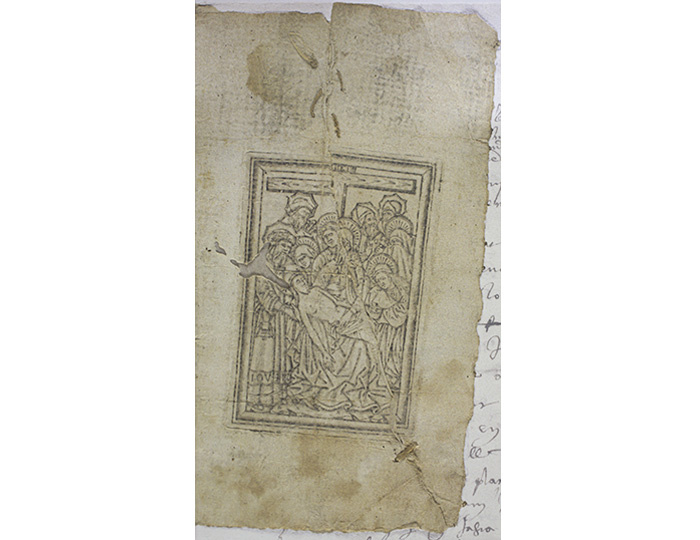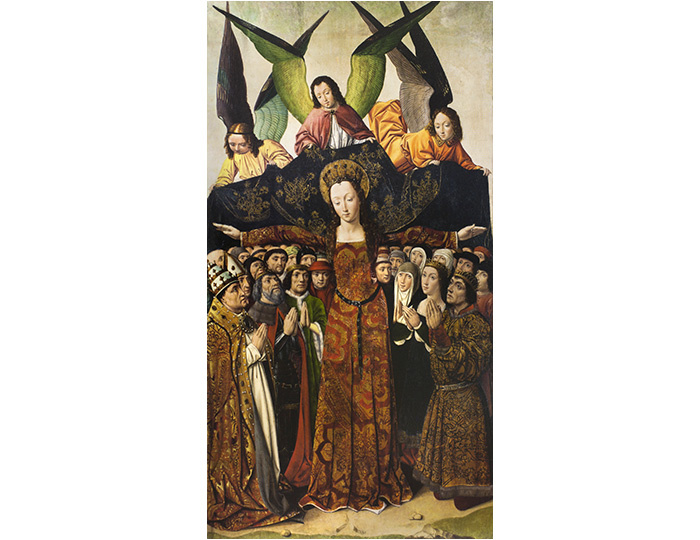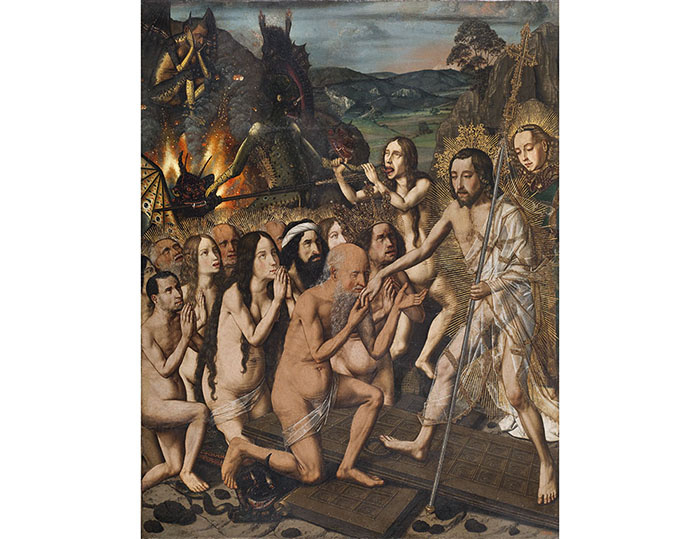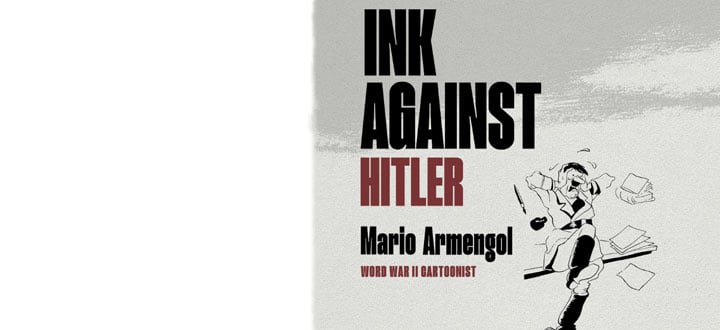Images For Conversos, Images Of Conversos
Following the pogroms that devastated many of the Jewish quarters on the Iberian Peninsula in 1391, large numbers of Jews were forced to embrace Christianity. Far from putting an end to the tensions, the mass conversions fuelled unease that Christianity was now under threat from Judaism from within. Accusations of Judaising caused fears and anxieties to be redirected towards New Christians—that is, conversos and their descendants. In this situation, unique in Europe, images were an active and powerful means of expressing a wide range of desires and concerns. On the one hand, Christians in favour of evangelisation used them to stress the need for all those who remained faithful to the Law of Moses to convert. On the other hand, the growing climate of mistrust prompted many conversos to commission religious images to allay suspicions of Judaising. In both cases, images were at the centre of the controversy.
Images as Incriminating Evidence
Just as advocates of persuasive catechesis held that images were necessary to encourage conversos to practise forms of Christian devotion, so did inquisitors deludedly regard the mistreatment of these images as the perfect grounds for accusing and convicting them of Judaising practices. Indeed, charges of flogging a crucifix frequently appear in the records of the Inquisition tribunals, as well as in the convictions inscribed on sanbenitos (penitential garments worn by condemned heretics). In the growing climate of intolerance that marked the second half of the 15th century, Jews and conversos had to be very careful about their relationship with Christian cult images. Any suspicion of irreverent handling could prove fatal.

Pietà c. 1462 Burin, 155 x 95 mm
Tortosa (Tarragona), Arxiu Històric Diocesà. Causes Criminals
New Christians and Images
These four representations of Christ reveal the significance that images held for New Christians. One of them, the Christ of the Vine, is a miraculous testament to conversion. Another, the crucifix commissioned by Alonso de Burgos, seems to express a more orthodox position. The pressure on conversos and the increasingly common accusations of Judaising made religious images certificates of Christian identity, as in the case of the busts of Antoniazzo Romano and Juan Sánchez de San Román. Also noteworthy is the great variety of aesthetic options, which range from the most bizarrely rustic to the most exquisitely sophisticated, visible in the combination of Flemish naturalism and traditional Byzantine models.

Juan Sánchez de San Román, Man of Sorrows, c. 1500
Oil and gold leaf on panel, 48, 6 x 38,6 cm
Madrid, Museo Nacional del Prado, P-7289. Photos José Baztán and Alberto Otero
Evangelisation and Preaching
The forced conversions that took place after 1391 were combined with an intense policy of evangelising the Jewish communities remaining on the Peninsula. Taking up the assumptions of Saint Augustine and Saint Paul, Christian preachers argued that the Jewish people could be saved if they acknowledged their error and joined in a universal conversion that would unite Old and New Christians. These catechetical methods of persuasion were implemented at the same time as new discriminatory measures were enacted, such as the Laws of Ayllón (1412), which put further pressure on the Jews. There is evidence that proselytising and preaching were always accompanied by threats and segregating measures.

Juan de Nalda, Virgin of Mercy, c. 1500
Oil on panel, 157 x 75 cm
Madrid, Museo Arqueológico Nacional, inv. 51812. Photo Raúl Fernández Ruiz
Jewish Details in Works by Conversos
The existence of a vast movement of false converts or crypto-Jews was a figment of the inquisitors’ imagination. The few conversos who continued to hold beliefs characteristic of Judaism all belonged to small, unorganised groups with no doctrinal corpus. It is quite another matter that some images showed a Christian perspective with Jewish overtones—the same attitude that led many converts to maintain some of their ancestors’ traditions and customs (such as keeping the Sabbaths or certain eating habits). This original perspective seems to be reflected in certain paintings by Bartolomé Bermejo, probably a converso painter of Jewish descent who is known to have maintained a close professional relationship with a dynamic community of New Christians during his fruitful stay in Daroca (c. 1470–76).

Bartolomé Bermejo, Descent of Christ into Limbo, c. 1474-79
Oil and gilding on panel, 89,5 x 69,5 cm
Barcelona, Museu Nacional d’Art de Catalunya, MNAC 15872










